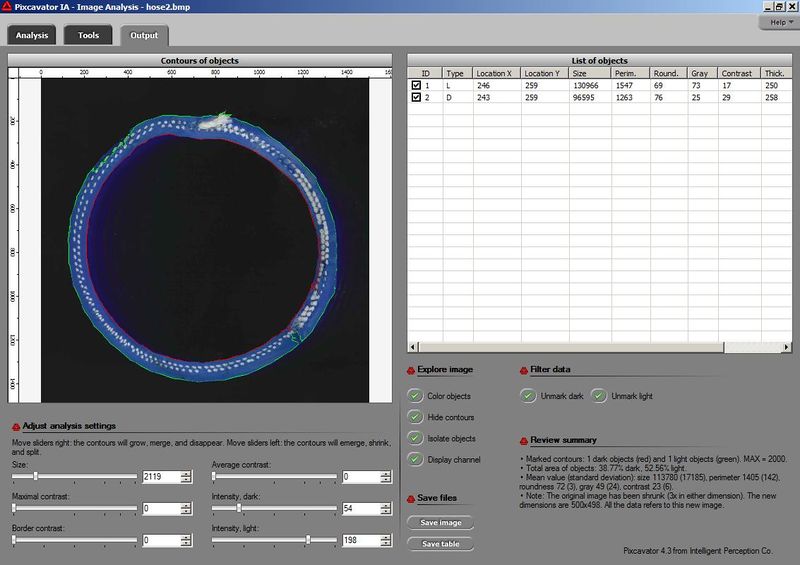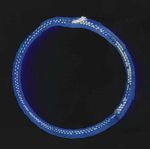This site is being phased out.
Hose measurements
Q: We "need to verify the internal diameter, external diameter and the wall thickness between the ID, OD and the reinforcement yarn. One issue we have is that the wall is not always concentric. We have a minimum wall thickness specification so we would like to measure the wall thickness at the thinnest point to determine if it meets our spec or not."
I analyzed one of the images. I found fairly good contours that capture the inner (red) and outer (green) borders of the hose with the settings that you can see in the screenshot. The measurements for this contours can be seen in the Pixcavator's output table.
The area inside the red contour is 130,966. Assuming this is a circle, the area is equal to π*R2, so the radius is
R = √(130,966/3.14) = 204 pixels.
Then the external diameter is 408 pixels (one would have to do calibration at this point to convert to inches).
The area inside the green contour is 96,595. Assuming this is a circle, the radius is
R = √(96,595/3.14) = 175 pixels.
Then the internal diameter is 350 pixels.
This suggests that the thickness of the wall should be 204-175=29 pixels. This is the average thickness of a ring with these measurements. To verify this number one can drop the assumption that these are circles and use the perimeters of the contours taken from the output table. Then
average thickness = (area of the wall)/(average perimeter) = (130,966-96,595)/((1,547+1,283)/2) = 24 pixels.
(A similar computation is presented here: Wall of a blood vessel.)
This is the average thickness of the wall not the minimal thickness which is what you want (in the image clearly there is an especially thin part on the lower right). Unfortunately, Pixcavator does not supply this kind of information at this time. The software computes measurements of each feature in the image but not the relations between the features. Computing the minimal thickness would require a pixel-by-pixel comparison of the two contours. This can be done but that would mean some significant customization work.



